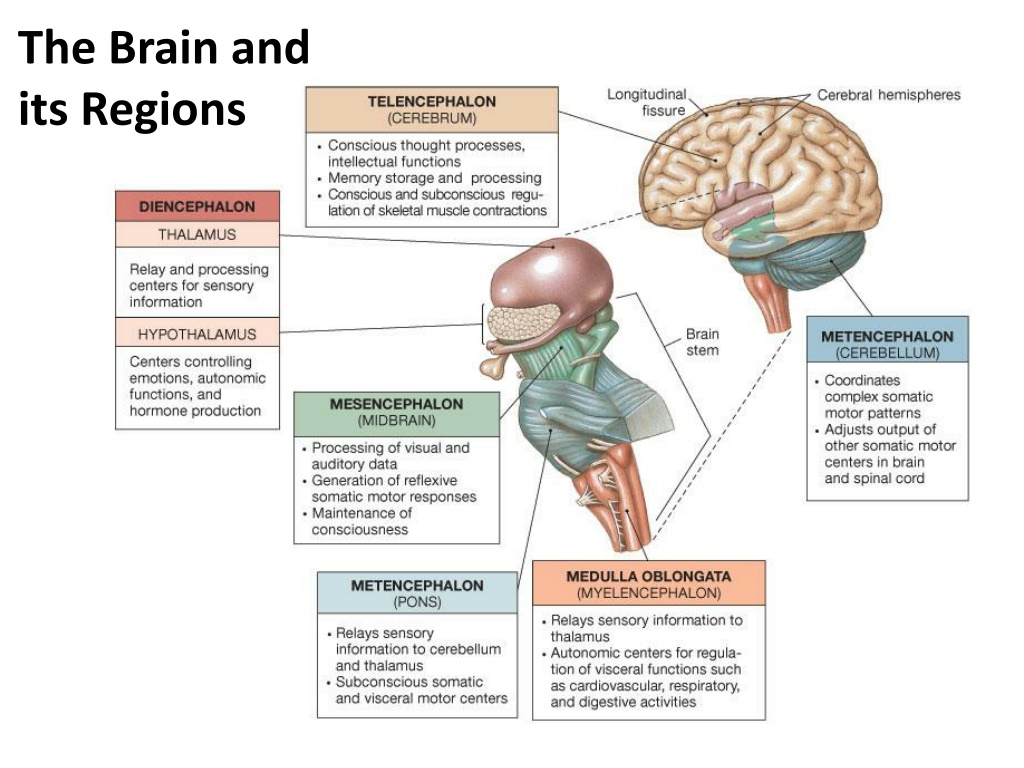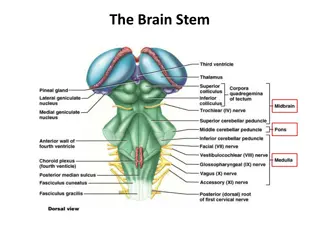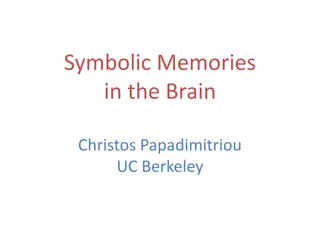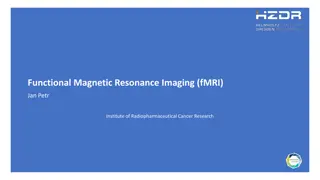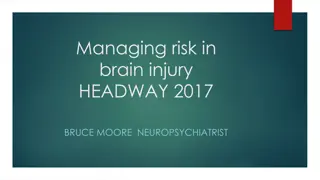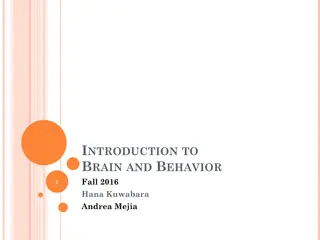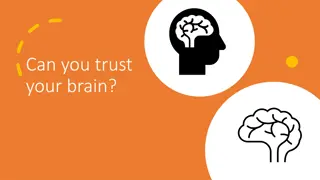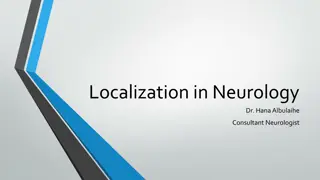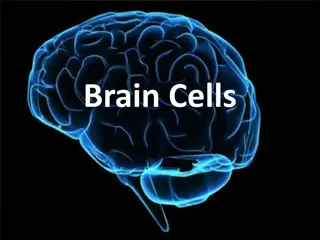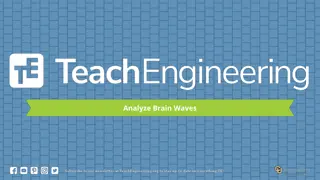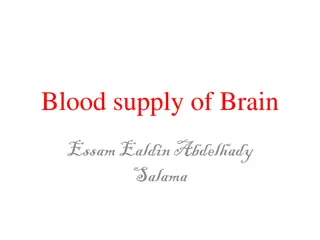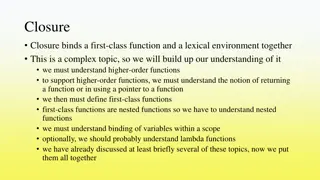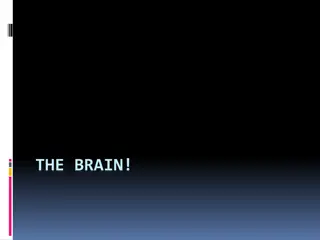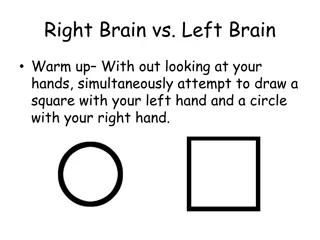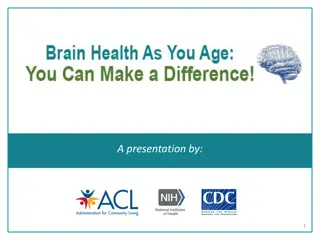Explore the Fascinating World of the Brain and its Functions
Delve into the intricate structures and functions of the brain, from its regions to the cerebral lobes. Learn about the roles of the left and right hemispheres, essential sensory and motor areas, and the cerebral nuclei. Discover how the brain enables us to be conscious, control movements, and process sensory perceptions.
Download Presentation

Please find below an Image/Link to download the presentation.
The content on the website is provided AS IS for your information and personal use only. It may not be sold, licensed, or shared on other websites without obtaining consent from the author. Download presentation by click this link. If you encounter any issues during the download, it is possible that the publisher has removed the file from their server.
E N D
Presentation Transcript
The Brain and its Regions
The 6 Divisions of the Brain (Cerebrum) Epithalamus
Sulci (sulcus) grooves on surface of cerebrum. Gyri (gyrus) fold of brain tissue between sulci. Fissure - deep groove, separating hemispheres. Three kinds of cerebral functional area: 1) Sensory areas 2)Association areas 3) Motor areas
General Anatomy of Cerebrum Two Hemispheres - Left and Right. Two significant gyri: Precentral gyrus (motor). Postcentral gyrus (sensory).
Cerebral Nuclei Frontal Section
Functions of the Cerebrum In General - our conscious mind, enables us to: Be aware of ourselves and sensations. Initiate and control voluntary movements. Communicate, remember, predict and understand. Cerebrum has 5 Lobes Frontal Lobe - memory, behavior, personality, movement. Parietal Lobe - somatic sensory perception. Temporal Lobe - auditory and olfactory perception. Occipital Lobe - visual perception. Insula Lobe - visceral perception, gustatory cortex*.
Brocas area Speech center Analysis by touch Writing (right-handed) Auditory cortex (right ear) Auditory cortex (left ear) Wernike s area General interpretive center (language and math) Spatial visualization and analysis Visual cortex (right visual field) Visual cortex (left visual field) Left Right Hemisphere Hemisphere Decussation: A crossing of nerve fibers from one side of the CNS to the other.
The Left Hemisphere Controls writing, movement of the right side of body. Usually dominant in language and tasks that involve symbolic reasoning. The Right Hemisphere Controls touch, movement of the left side of body. Typically superior at non-verbal, visual and spatial tasks.
R R L Creative General Imaginative Intuitive Conceptual Holistic Heuristic Empathetic Figurative Irregular Analytical Precise Logical Repetitive Organized Details Scientific Detached Literal Sequential
The Limbic System = Emotional Brain Anatomical Location: Medial aspect of cerebral hemispheres. Also within the diencephalon. Composed of: Septal nuclei, cingulate gyrus, hippocampus and amygdala. The fornix links the limbic system together.
Structures of the Limbic System Cingulate gyrus Allows us to shift between thoughts. Interprets pain as unpleasant. Amygdala Detects menacing glances from others. Emotional recognition of faces. Hippocampus Consolidation of new memories (storage & retrieving) Navigation and Spatial Orientation. Septal Nuclei Role in reward and reinforcement.
The major groups of axon fibers and tracts of the central white matter. a) Association Fibers b) Commissural Fibers c) Projection Fibers
The Reticular System - widespread connections, ideal for arousal of the brain as a whole. Reticular activating system (RAS) - Maintains consciousness and alertness. Functions in sleep and arousal from sleep. Pons and MO
Diencephalon = 1) Epithalamus, 2) Thalamus and 3) Hypothalamus 1) Epithalamus - Includes the pineal gland (body). Secretes hormone melatonin, under influence of the hypothalamus. * Dimethyl-tryptamine (DMT) is also released from Pineal gland.
Note: The significant Blue Light emitted from tv, computer and phone screens blocks the hormone melatonin, therefore suppresses your body's ability to prepare for sleep.
2) Thalamus * Makes up 80% of the diencephalon. * Contains ~ a dozen major nuclei which act as the gateway to cerebral cortex. * Afferent impulses converge on thalamus. * Nuclei organize and amplify or tone down signals.
3) Hypothalamus Main visceral control center of the body Adrenal gland Heart Rate and BP Tb and Sexual Dimorphism Shivering Sweating Thirst and Hunger Posterior Pituitary Satiety Circadian rhythms Olfaction and Memory Feeding
Functions of the Hypothalamus: 1. Controls autonomic nervous system (ANS) 2. Control of the endocrine system 3. Regulation of body temperature (Tb) 4. Regulation of hunger and thirst sensations 5. Regulation of sleep-wake cycles Overall: Controls much of behavior via emotional responses (Limbic) and ANS - Formation of memory
